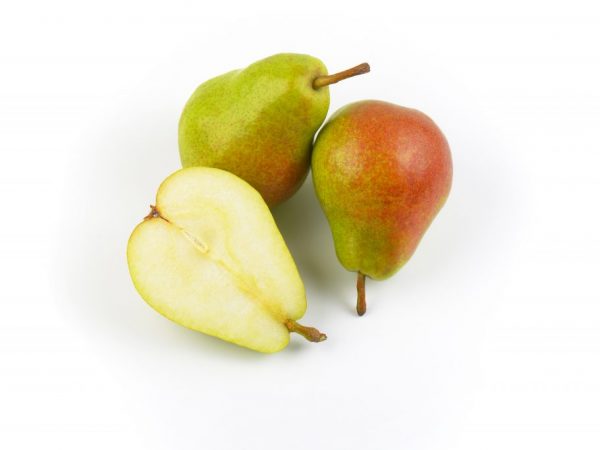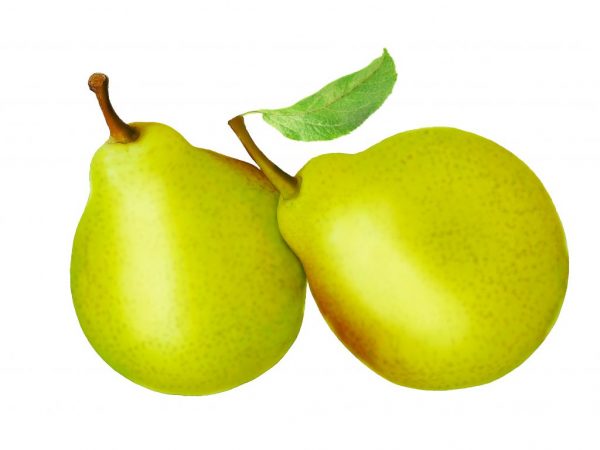Description of Karataevskaya pear
Pear Karataevskaya is very popular among beginners in the field of gardening. Thanks to its unpretentious care and high yield rates, it has gained recognition all over the world.

Description of Karataevskaya pear
Variety characteristic
The pear of the Karataevskaya variety was bred in the early 70s. Obtained after breeders crossed the Dessert variety and the Pollen granddaughter. As a result, the hybrid has absorbed all the advantages of both varieties. In the early 2000s, the Karataevskaya pear was included in the State Register of the country. It is recommended to grow it in all regions, regardless of the climate.
Description of the tree
According to the description, the trees reach 3 m in height. Lateral shoots are poorly developed. The buds are characterized by a conical structure and are located at an angle to the main branch. Shoots are brown. Leaves are ovoid. A dark green leaf plate, smooth, covered with a dense layer of wax bloom. The pear variety Karataevskaya belongs to self-fertile varieties, therefore it does not require planting a number of other pollinators. Up to 50 kg of products are harvested from 1 tree.
Description of the fetus
- rich yellow color;
- blush of a light pink shade;
- round form;
- stalk 3 cm long;
- weight about 140 g.
Taste indicators and use
Ivory pulp. The taste of the fruits of this variety is pleasant and specific. Of note is the sweet taste with hints of acid. Some pungency notes are highlighted, which give the fruit an unusual piquancy.
The fruit contains 4% ascorbic acid, 35% vitamin P and almost 15% sugar per 100 g of product.
It is ideal for making desserts, stewed fruit or fruit salads. When consumed fresh, there is a greater chance of getting all the vitamins the body needs.
Landing

This variety grows warm
Despite the fact that the pear of the Karataevskaya variety belongs to thermophilic crops, it should be planted in shaded areas of a vegetable garden or orchard. It is best to place the seedlings near fences or buildings that can act as wind defenses. Loamy or sandy soil is ideal. In the fall, you need to dig up the ground, remove all weeds and add humus (at the rate of 5 kg per 1 m2).
In the spring, in the middle of March, you can start planting a seedling. A hole should be dug a few weeks before planting. It is important that its depth is 90 cm, and the width is about 60 cm. 10 liters of water is poured inside, in which 3 glasses of compost were diluted. After 14 days, you can start deepening the seedling. During planting, care should be taken that the root collar rises above the ground by 4-6 cm. The root system is carefully distributed over the entire hole and covered with earth. If you want to get the fastest fruiting, then 7 kg of humus and 3 kg of sand should be added to the ground for backfilling. After backfilling, the soil should be tamped. The maximum density of trees is 4 pieces per 1 m2.
Care
This variety requires standard care procedures.
- Top dressing. They are carried out only 2 times. The first fertilization should be done 2 years after planting. At this point, it is necessary to dilute 50 mg of potassium nitrate in 10 liters of water and water each plant with this volume of water. The second feeding is carried out 20 days before the expected fruiting. Dilute 40 g of ammonium nitrate in 10 liters of water and pour 8 liters under each bush.
- Proper watering is important. It is recommended to water the trees no more than once a week. Do not exceed the volume of water - no more than 15 liters per 1 tree - otherwise there may be a risk of root rot.
- It is advisable to weed and remove weeds every time after watering. The depth of loosening the soil is about 10-12 cm, in order to avoid disturbing the root system.
- Pruning of branches is carried out in early spring. Sick and damaged areas of the plant are removed, and in the fall you need to thin out the crown a little in order to increase the yield for the next year. As the bush grows, it should be tied to a support.
Diseases and pests
This species is resistant to powdery mildew and scab and is susceptible to root rot. It is impossible to get rid of this disease; you will have to remove the entire plant as a whole. As a preventive measure, you need to monitor the level of moisture in the soil and regularly loosen the soil.
The main parasites to which this variety can be exposed are the moth and beetles. An effective remedy against the moth will be spraying with Bordeaux liquid (3 mg per 10 liters of water). For beetles, spraying should be carried out using a solution of wood ash (200 g per 10 liters of water).
Conclusion
Despite the fact that this species appeared on the world market relatively recently, many gardeners were able to appreciate it. This variety is considered ideal for cultivation in any region of Russia.


